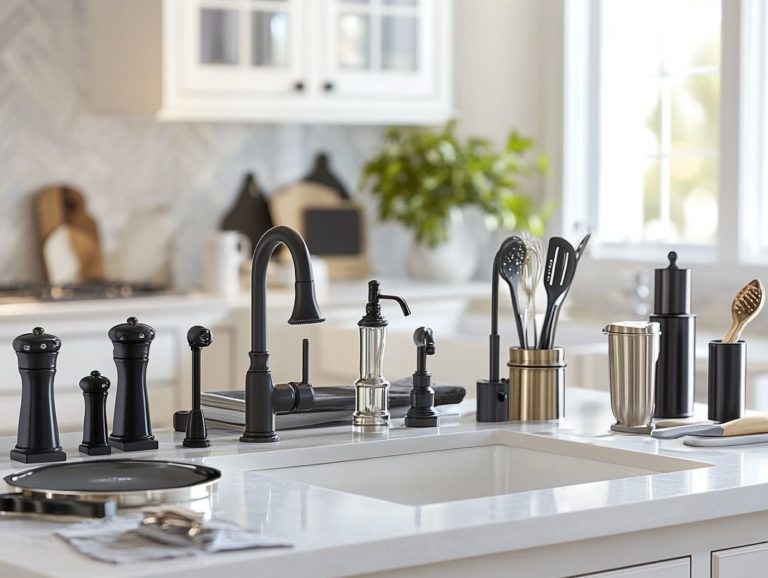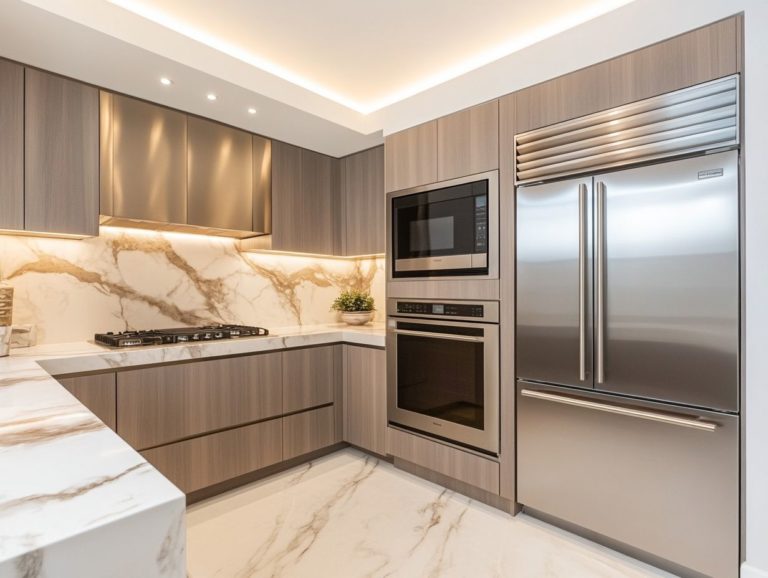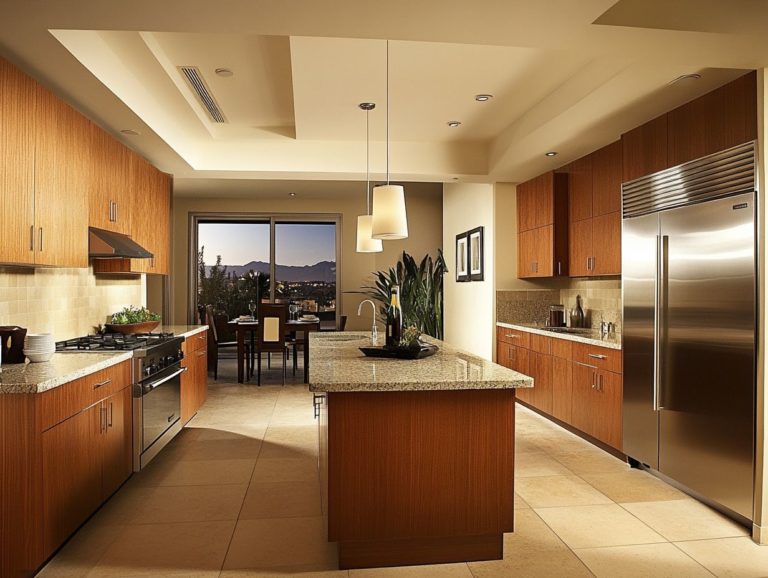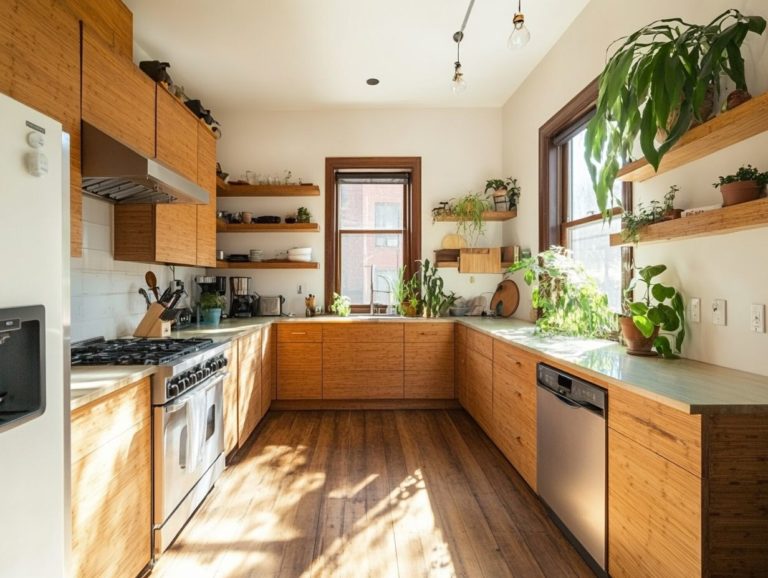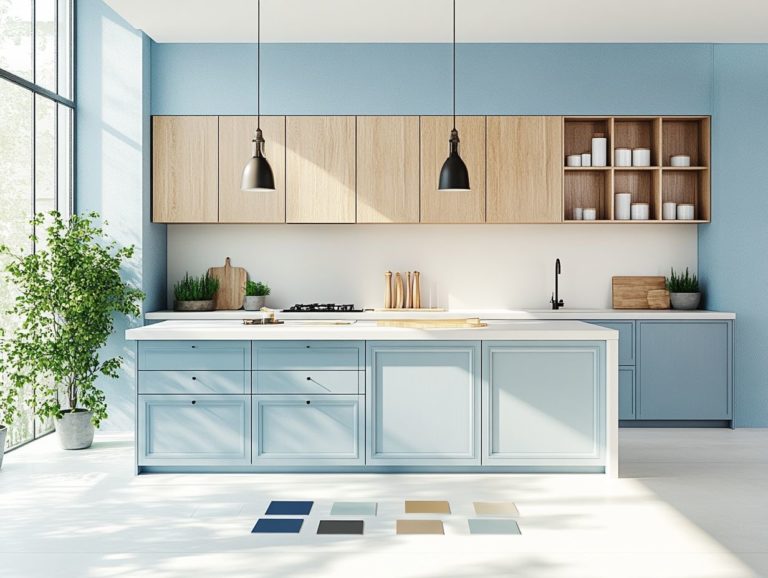Sustainable Kitchen Materials You Should Consider
In today’s world, the choices you make about the materials used in your kitchen can profoundly impact both your health and the environment.
This article delves into what truly makes a material sustainable and highlights the numerous benefits of selecting eco-friendly alternatives for your culinary space.
You’ll gain insights into the various types of sustainable materials available, along with practical tips for seamlessly incorporating them into your kitchen.
Discover how small changes can transform not just your kitchen, but your entire life!
Contents
- Key Takeaways:
- What Makes a Material Sustainable?
- Benefits of Using Sustainable Kitchen Materials
- Types of Sustainable Kitchen Materials
- Eco-Friendly Alternatives for Common Kitchen Items
- How to Incorporate Sustainable Materials in Your Kitchen
- Cost Considerations and Long-Term Savings
- Frequently Asked Questions
- What are sustainable kitchen materials?
- Why should I consider using sustainable kitchen materials?
- What are some examples of sustainable kitchen materials?
- How can I incorporate sustainable materials into my kitchen?
- Are sustainable kitchen materials more expensive?
- Where can I find sustainable kitchen materials?
Key Takeaways:
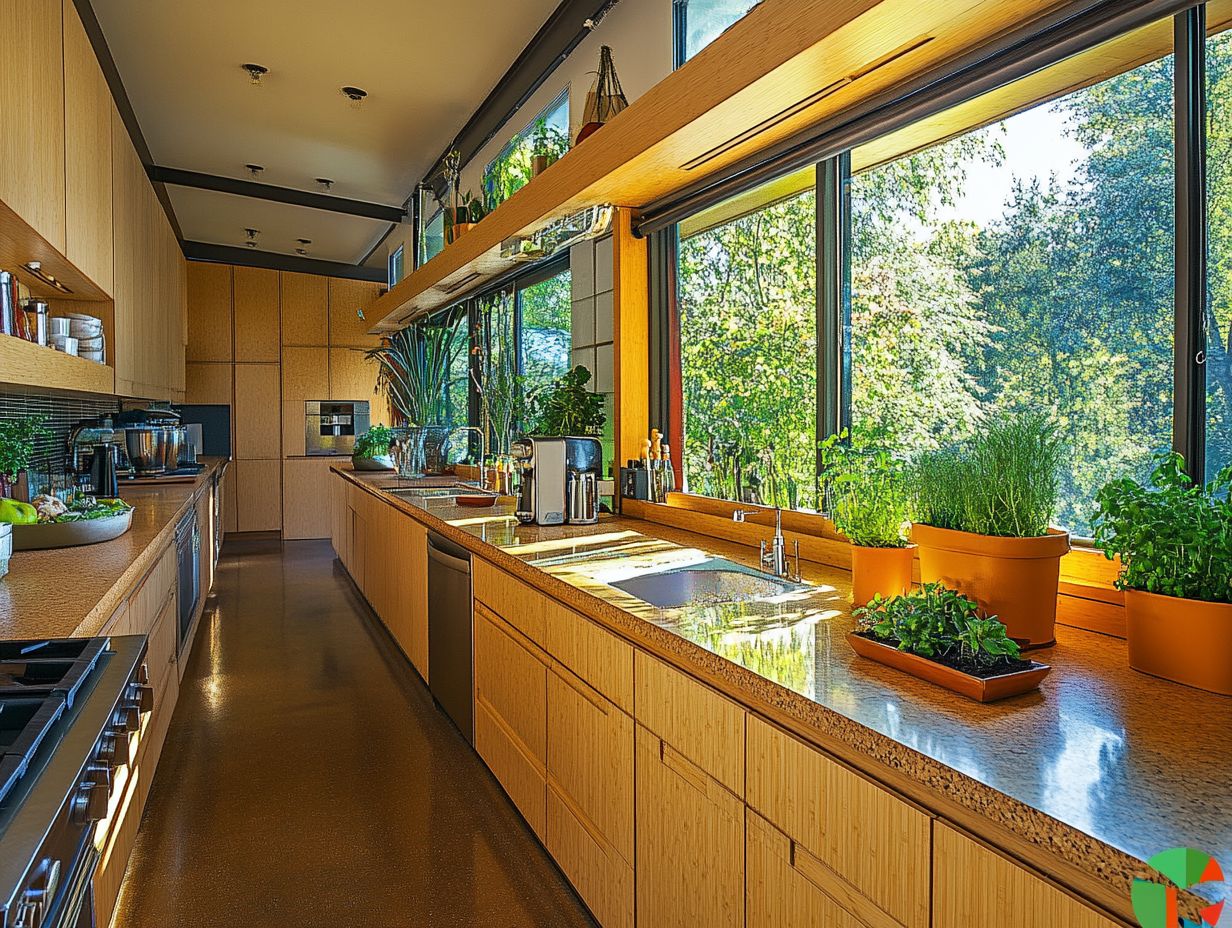
- Sustainable kitchen materials offer significant environmental and health benefits.
- Choosing eco-friendly options is a wise investment for your kitchen.
What Makes a Material Sustainable?
To truly understand what makes a material sustainable, you need to examine several key factors. This includes looking at the sources of the materials and their environmental impact.
Sustainable materials often come from renewable sources like bamboo or reclaimed wood. They are processed using eco-friendly practices. These materials should also be recyclable or biodegradable, which helps minimize waste and promotes sustainability, especially in kitchen design.
Benefits of Using Sustainable Kitchen Materials
Choosing sustainable kitchen materials presents many advantages that enhance both your health and the environment. This makes it an appealing choice for those who value eco-conscious living.
For instance, using water-based paints can reduce indoor air pollution. Opting for energy-efficient appliances allows you to save on energy bills.
Moreover, sustainable materials like environmentally friendly cabinets not only create a healthier living space but also support practices that benefit the planet.
Environmental and Health Benefits
The environmental and health benefits of adopting sustainable kitchen materials are more than just aesthetics; they improve air quality, reduce waste, and conserve energy.
When you choose eco-friendly kitchen products—such as energy-efficient appliances and conscious flooring—you actively reduce harmful emissions and energy consumption, creating a healthier home environment.
Research shows that homes with energy-efficient appliances can cut indoor pollutants significantly, improving air quality by up to 50%.
By using sustainable materials like bamboo cabinetry, you help combat deforestation and enhance energy efficiency, with proper insulation potentially lowering heating costs by nearly 30%.
As eco-conscious consumers increasingly seek sustainable options, many brands are providing innovative alternatives that meet health standards while offering durable and stylish solutions.
By making these choices, you can greatly reduce your carbon footprint and create a cleaner, safer kitchen for your family.
Types of Sustainable Kitchen Materials
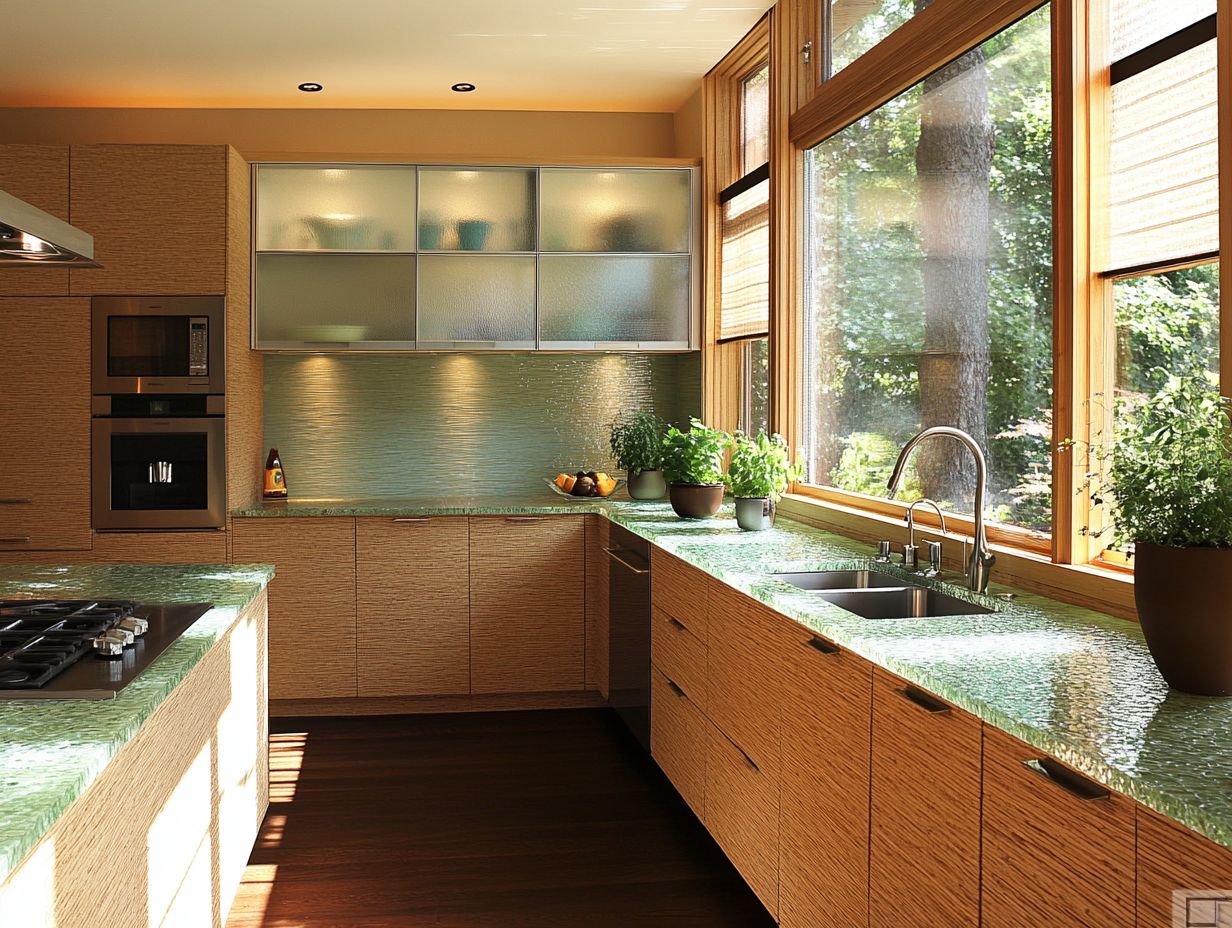
When designing an eco-conscious kitchen, it’s essential to familiarize yourself with the range of sustainable materials available. These options can significantly reduce your environmental impact while improving your health.
Consider options like bamboo cabinets or MDF cabinets made from recycled materials; they not only elevate your kitchen’s aesthetic but also promote sustainability.
By integrating eco-friendly items and adopting low-waste strategies, you take important steps toward creating a greener home.
Eco-Friendly Alternatives for Common Kitchen Items
Transformar tu cocina en un refugio ecológico está a tu alcance mediante la implementación de cambios pequeños pero impactantes. Al optar por alternativas sostenibles a los artículos de cocina comunes, puedes mejorar la funcionalidad de tu espacio y contribuir a un planeta más saludable.
Elegir opciones libres de plástico y materiales biodegradables te permite hacer una diferencia significativa. Incorporar productos de limpieza verdes no solo aumenta la sostenibilidad, sino que también asegura que tu cocina brille.
Por ejemplo, cuando reemplazas el film plástico tradicional por envolturas de cera de abejas, reduces los desechos plásticos y mantienes tus alimentos frescos de manera natural.
Cambiar a utensilios de bambú reduce tu dependencia de materiales sintéticos, ya que el bambú es sostenible y biodegradable. Usar recipientes de vidrio en lugar de plástico para el almacenamiento de alimentos ayuda a prevenir la lixiviación de productos químicos y es fácilmente reciclable.
Estas elecciones ecológicas no solo disminuyen tu impacto ambiental, sino que también promueven un estilo de vida más saludable, alineando tus prácticas culinarias con valores que priorizan el bienestar del planeta.
How to Incorporate Sustainable Materials in Your Kitchen
Incorporating sustainable materials into your kitchen design demands a thoughtful approach that harmonizes style with eco-conscious decisions.
Begin by investing in custom cabinetry made from wood that has been used before and is given a new life. Choose environmentally friendly flooring along with water-based paints that prioritize both health and sustainability.
By seamlessly integrating energy-saving appliances and various eco-friendly elements, you can curate a kitchen that embodies functionality and a commitment to sustainability.
Tips for Making the Switch
Switching to sustainable materials can transform your kitchen into a healthy haven! It doesn’t have to feel daunting. With just a few straightforward tips, you can gradually create an eco-friendly kitchen.
Begin by swapping out traditional kitchen items for energy-efficient appliances and green cleaning products, which are readily available today. Consider investing in biodegradable materials and eco-friendly kitchen essentials that resonate with your sustainability goals.
To elevate your efforts, prioritize products with recyclable packaging or those crafted from renewable resources, as they typically offer greater environmental benefits.
Don’t let budgeting stand in your way; keep an eye out for sales and think about buying in bulk to save money over time.
By implementing small, consistent changes, you’ll not only lessen your carbon footprint but also cultivate a healthier living environment for yourself and future generations. Over time, these choices will result in noticeable savings on energy bills, demonstrating that sustainable living is beneficial for the planet and your financial well-being.
Cost Considerations and Long-Term Savings
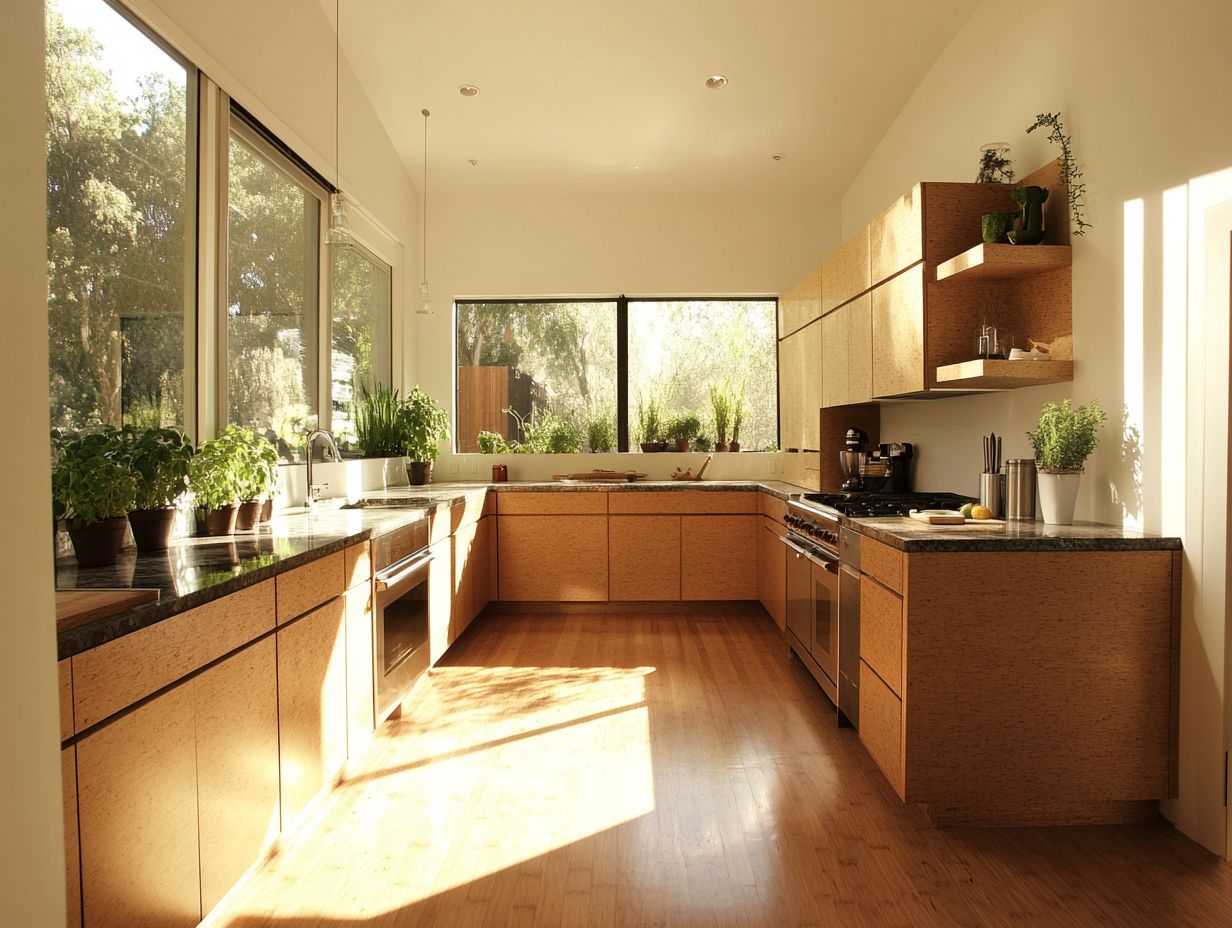
When evaluating kitchen upgrades, it’s crucial to weigh the cost implications alongside the long-term savings that come with using sustainable materials.
While the initial investment might appear steep, the financial benefits of opting for sustainable materials can lead to substantial savings over time, thanks to lower energy consumption and reduced maintenance costs.
Investing in eco-friendly kitchen products helps cut down on health-related expenses, ultimately creating a win-win situation for both your budget and the environment.
Don’t miss out on creating your eco-friendly kitchen today!
Financial Impact of Using Sustainable Materials
The financial impact of incorporating sustainable materials in your kitchen can be quite profound. It affects everything from your utility bills to your purchasing decisions.
By opting for energy-efficient appliances and other eco-friendly kitchen materials, you can experience significant cost savings over time. This choice is not just environmentally responsible but also financially smart!
In addition to immediate savings on your utility bills, you may find various rebates and incentives available for those who invest in green upgrades. Many local governments and utility companies offer financial perks for eco-friendly renovations, which can help offset initial costs.
Sustainable materials often come with enhanced durability. This means reduced maintenance expenses throughout the lifespan of your kitchen.
By prioritizing items like cabinets that release fewer chemicals or recycled countertops, you’ll not only contribute to a healthier living environment but also secure long-term financial benefits that exceed the initial investment.
Frequently Asked Questions
What are sustainable kitchen materials?
Sustainable kitchen materials are products that are produced or used in a way that has minimal negative impact on the environment. They are also socially responsible and economically viable.
These materials are often made from renewable or recycled resources and have a lower carbon footprint compared to traditional materials.
Why should I consider using sustainable kitchen materials?
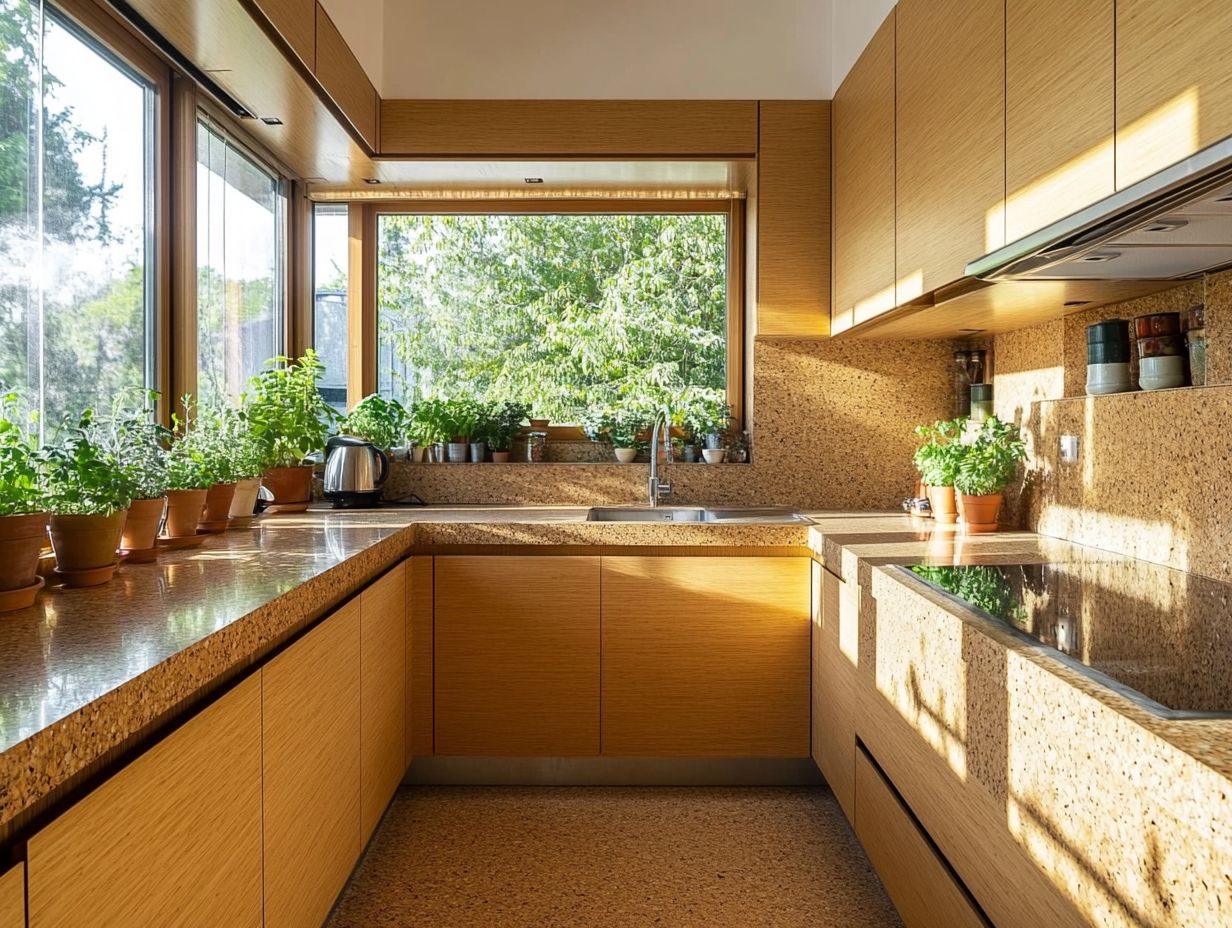
By using sustainable kitchen materials, you can lower your carbon footprint and make a positive impact! These materials are often more durable and have a longer lifespan.
This reduces the need for frequent replacements, and many sustainable materials do not contain harmful chemicals, making them safer for you and your family.
What are some examples of sustainable kitchen materials?
Some examples of sustainable kitchen materials include bamboo, cork, and reclaimed wood. Recycled glass and natural stone are also excellent choices.
These materials are highly renewable, biodegradable, and can be sourced locally, reducing transportation emissions. Other options include recycled plastic, salvaged metal, and natural linoleum made from linseed oil and wood flour.
How can I incorporate sustainable materials into my kitchen?
There are many ways to incorporate sustainable materials into your kitchen. You can choose sustainable countertops, flooring, cabinets, and backsplashes.
Consider energy-efficient appliances, eco-friendly cleaning products, and LED lights. It’s also important to think about the packaging and materials of the products you purchase for your kitchen, like utensils and cookware.
Are sustainable kitchen materials more expensive?
While some sustainable materials may have a higher upfront cost, they often have a longer lifespan and require less maintenance. This makes them more cost-effective in the long run!
By choosing sustainable materials, you are investing in a healthier environment and supporting ethical practices.
Where can I find sustainable kitchen materials?
Sustainable kitchen materials can be found at many home improvement stores, as well as local sustainable and eco-friendly outlets. You can also purchase these materials online from various retailers.
It’s essential to do your research and choose products from reputable companies that prioritize sustainability and ethical practices.
Don’t wait to create a healthier kitchen! Explore sustainable options today or consult a professional for kitchen upgrades.
